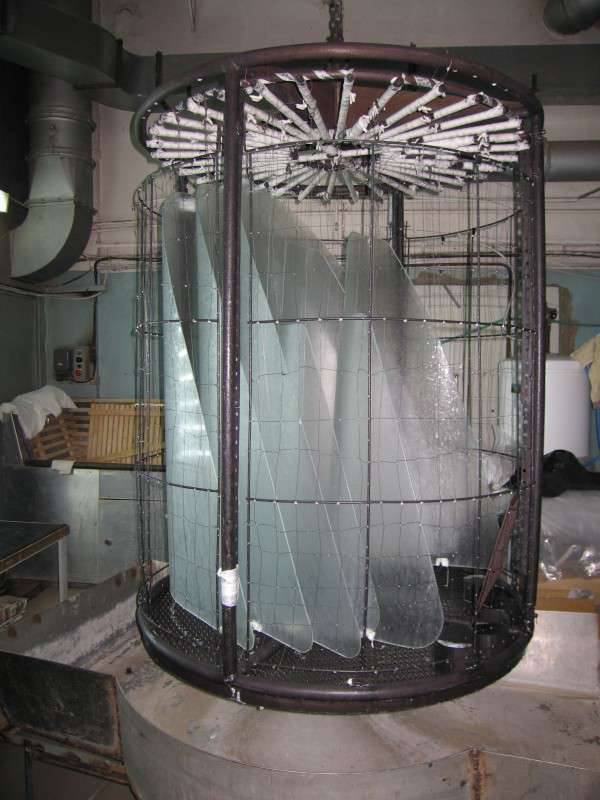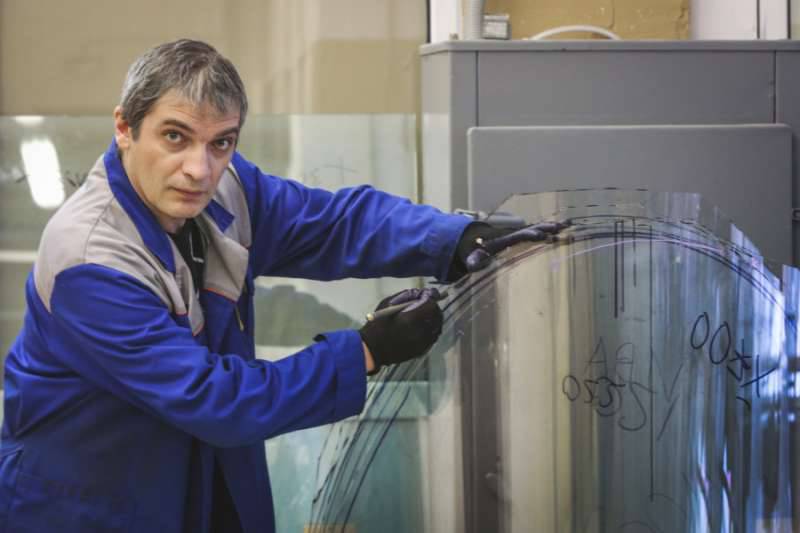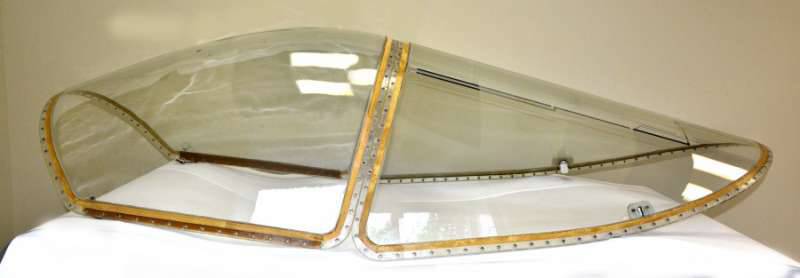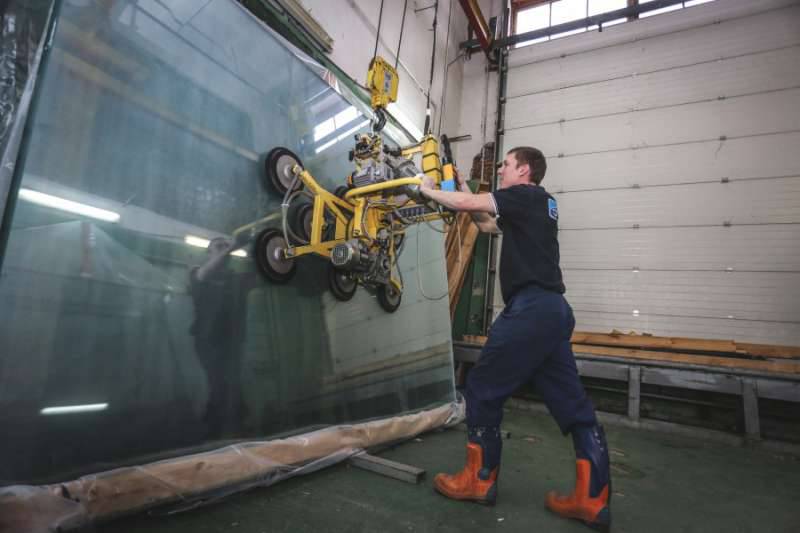Tougher steel: how to create innovative technology for the glazing of aircraft T-50
Russia has developed new technologies for the manufacture of glazing cabins of military and civilian aircraft of silicate glass. Such products are easier and more durable than if they were created from previously used organic materials. Silicate glass is used in other areas - from space to housing.
Among space explorers, the controversy surrounding the assessment of the safety and operation of the International Space Station has not been subsiding for years. The fact is that in the Russian segment of the ISS installed 13 windows. During joint discussions of the ISS, it is proposed to close the windows in the Russian segment with deaf plugs because of the risk of defects in the glass due to micrometeorite strikes - they say, the station's safety may improve. But the representative of the Russian side - Director of the Scientific Research Institute of Technical Glass (NITS), Honored Worker of Science, Vice-President of the Academy of Engineering Sciences of the Russian Federation, Doctor of Technical Sciences, Professor Vladimir Solinov is standing his ground - for many years the residual strength after the impact of cosmic microparticles has remained and, various radiation and other threats to space did not affect the security of the portholes created at the institute, as well as the crew, so there are reasons for limiting the observation of our planet There is no “dimming” the work of astronauts in the Russian modules of the orbital station.
Portholes for an orbital station is just one of the few products manufactured at NITS. The main part of the work of scientists and technologists of the institute located in the south-west of Moscow, of course, is associated with the creation of products of structural optics, glazing, or as they say “complex transparent optical systems” for fourth and fifth generation combat aircraft produced by UAC factories. And every year work for aviation becomes noticeably larger.
Silicate or organic

Silicate glass is a material with unique properties. Its transparency, high optics, heat resistance, durability, the ability to use various coatings - make it indispensable for glazing aircraft. But why when glazing the cockpit of aircraft abroad, and we have preference organically? Only for one reason - it is easier. They also say that silicate glass is too fragile.
In the past few years, the development of materials scientists at the NITS has allowed to radically change the concept of silicate glass as a fragile material. Modern hardening methods make it possible to provide glazing for modern combat aircraft with sufficient strength to withstand the impact of birds weighing about two kilograms at a speed of 900 km / hour.
“Today the method of hardening in the surface layer has exhausted itself. It's time to change the internal structure of the glass, its defectiveness, ”says Vladimir Solinov. This, if not strange, contribute to the sanctions imposed by the West. The fact is that even in “pre-sanctioned” times, foreign companies, by decision of NATO, did not supply Russia with improved-quality silicate glasses used there for special purposes. This forced NITS to use architectural glass. Although Russian manufacturers produce millions of square meters of such glass, its quality is not suitable for use in aviation.
Import substitution has come to the rescue: a new project has been launched in Moscow to conduct R & D and design equipment that is fundamentally new for the glass industry.
All the processes of glass synthesis with Russian priority will be worked out on it.
The project is entrusted to the young scientist Tatyana Kiseleva. 26-year-old graduate of the Russian University of Chemical Technology. DI Mendeleeva leads the laboratory, in 2015 she defended her thesis. At the glass department at Mendeleevka, Tatyana studied the properties of transparent armor. One of her professional challenges is to develop glass, which in its properties would be superior to one of the world's best analogues - Herkulit glass, which Russia has not yet produced.
The project is based on a new original method of glass melting. Already today, glass samples have been obtained in the laboratory, the structural strength of which is three times higher than analogues obtained by the traditional method. Add to this the existing methods of hardening, and get glass, the strength of which is several times higher than many grades of alloy steel. Lighter products are made of stronger glass. However, it should be noted that the developers of organic glass are constantly improving the technical performance of their products, the debate about which glass is better is not over.
Flashlight for T ‑ 50
Imagine a package of several silicate glass plates that need to streamline the front visor of a high-speed aircraft.
About forty years ago, NITS specialists developed a technology of deep bending. In a special oven lays several layers of glass. Within a few hours at high temperature under its own weight the glass bends, acquiring the desired shape and curvature. If necessary, special mechanisms push the workpiece, causing it to bend according to a special schedule.
For the first time in the world, this lamp was replaced by a MiG ‑ 29 fighter, consisting of three glasses, with one silicate-free besprepletnoe glass.
With increasing speeds, the requirements for heat resistance of glazing, with which organic glass could no longer cope, increased. At the same time, optical requirements and visibility requirements were tightened. Several years ago, in collaboration with the Sukhoi Company and the United Aircraft Building Corporation, a new technology was developed for the production of glass for T-50.
The development was funded by aircraft manufacturers, in part - by the Ministry of Industry and Trade. Substantial assistance was provided in carrying out technical re-equipment of the enterprise, said Yuri Tarasov, director of the UAC Technology Center.
As a result, the windscreen of the T ‑ 50 aircraft is almost twice the size of the MiG ‑ 29 visor, and the shape of the product from the classical cylinder has become a complex 3D format.
The result - for the first time in the world, the frontal and folding part of the T-50 aircraft flashlight (manufactured by the Sukhoi company) was made of silicate glass in the 3D format. In this case, the weight of these parts was lower than if they were made of organic glass.
The results achieved gave impetus to equipping planes of other plants and design bureaus included in the KLA with such glazing. Immediately, there was a need to upgrade, replacing organic glazing with silicate, for example, on the Yak-130, Su-35, MiG-31, MiG-35 aircraft. After such a replacement (i.e., improving the strength characteristics of the glazing), the MiG-35, for example, first reached the speed of up to 2000 km / h, that is, could fly faster by an average of 40% than any other aircraft in the world.
In recent years, the work style of Moscow scientists has seriously changed. About three hundred NITS specialists perform a full cycle - from a technical task to small-scale production. Here are the developments of technology, and the selection of key materials using glass, and a large cycle of tests for all factors affecting the aircraft, both on the ground and in the air.
There are several key requirements for modern glass, among which, besides high strength, are optical transparency, high light transmission, increasing the range of sight, anti-glare properties, protection from exposure to solar radiation and other radiation, anti-icing properties, providing uniform electrical resistivity.
All this is achieved by coating with an aerosol, vacuum or magnetron method. Powerful and complex equipment, evaporating the metal and precipitating it on the glass surface, allow NITS to apply any coatings, including protection from special factors.
This set of properties makes it possible to speak of a glazing product as a complex optical system, and the high strength properties of glass, which forms part of the aircraft cabin, created a new field of science and technology and introduced the term “structural optics products” (IR).
New Technologies
When the product — the flare part of the flashlight for the T ‑ 50 — is unloaded from the furnace for further processing, it is not much like the future product. When glass is bending, the edges of the workpiece are deformed, and it is impossible to remove them from a large-sized workpiece, even with a complex geometric shape, with a diamond tool. The laser came to the rescue. The laser beam of the robotic complex not only cuts the workpiece according to the program laid down in it, but also, by melting the edge, increases the strength of the edges of the products, preventing the occurrence of cracks. Laser cutting of products of large-sized 3D form was first used in Moscow. This method received a patent in March 2012. The laser beam is also used for applying cut-offs in an electrically conductive layer on the surface of the glass, creating heating zones. After laser processing, the blank becomes more and more like the T ‑ 50 flashlight.
After cutting, each billet is machined on a five-axis machine. The unique lodgement allows for zero initial mounting voltages on it. The chief technologist of the institute, Alexander Sitkin, spoke about the prospects for using the complex for grinding and polishing glass surfaces: work that, if necessary, is carried out only by hand. Developed technologies are the pride of the institute.
More recently, the finished glass block with a sealant was mounted in a metal frame. The transition to composite materials developed by NITS allowed reducing the weight of the product by 25%, increasing the bird resistance and glazing resource to the level of glider glazing resource. It has become possible to replace the glazing in the field.
The whole production cycle of ICE lasts about one and a half months. Most of the products go to the UAC manufacturing plants, some - to repair plants for modernization, some - to the air force airfields, to the so-called first-aid kits. The main part of NITS products is carried out as part of the state defense order.
The NITS is reluctant to share information about the characteristics of glazing for combat aircraft. But it is clear that the glasses developed for the cabins of domestic civil aircraft surpass the imported ones in a number of parameters.
For example, as can be seen on the NITS website, the glass thickness on a Tu ‑ 204 plane is 17 mm, the glass thickness with similar properties for Boeing 787 airplanes is 45 mm.
Generation V
In the past few years, the director of the institute, Vladimir Solinov, has managed to significantly rejuvenate the team. The Moscow production, which recently celebrated the 60 anniversary, today employs both young people and experienced specialists. Here willingly go students of the senior courses "Mendeleevka". Having come to the internship at the institute and having learned that here the salaries for 70 are thousand rubles, they first get employed by simple workers, then quickly grow to technologists. Many experienced workers.
One of them, Nikolai Yakunin, handles the glass for helicopters. “I came here immediately after the army, forty years ago. But if it were not for the high level of automation, I probably would not have survived. It’s hard for me even to be in good physical shape with a product weighing 30 kg all day long, ”says Yakunin.
People and nails
All over the world, technologies developed for aircraft manufacturing that allow the manufacture of glasses of the required strength are used in many other sectors of the national economy.
A few years ago, in order to prove the high strength of silicate glass, the institute made ... glass nails. Hammer hammered. They could be used in products with anti-magnetic properties.
Also, these nails were tested during construction, instead of clamps when gluing yacht hulls. But the nails were only exotic. Now no one needs to prove the high strength of glass - all the works of NITS are evidence of the high quality of this ancient and, at the same time, completely new material.
The director of the institute, Vladimir Solinov, uses all his capabilities to prove the need to ensure high strength glass, including architectural and construction glass.
He is a member of the Russian-American Commission on Security in Space, which was discussed at the beginning of this article, as well as the City Planning Commission of the State Duma - after all, the construction of modern buildings is a large part of the material - glass. And this means that technologies and materials developed for aviation will in the near future make the lives of millions of people more and more comfortable and safe.



Information